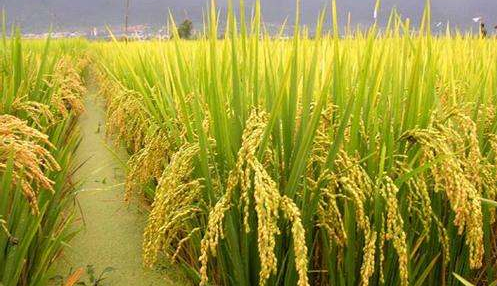Five measures for drought resistance and seedling protection of late rice
For the late-winter rice, in addition to doing everything possible to open up water sources, some corresponding management measures can be taken for the seedlings to reduce disaster losses. The author suggests to try the following five methods to combat drought and protect seedlings.
First, water-saving irrigation, promote roots and tie. In the case of rice with more water and more fertilizer, the growth of the aboveground part is faster. When there is less water and less fertilizer, the root growth accelerates and the soil is deepened. After rice transplanting, the drought was affected by drought, and the overall growth of the seedlings was affected, but the growth of the roots was faster than the growth of the aerial parts. Therefore, we can use the situation to promote the root system deep into the soil layer, which can absorb the water in the deep, and lay the root foundation for the rapid growth of the seedlings after the drought. In the farms, there is a saying that "the grass is flat and the grass is good." The flat grass period is not as dry as possible. There are two specific irrigation methods to save water and avoid drought damage during this period:
One is humid irrigation. When irrigating, the former water does not see the post-water, and the soil is kept moist, which not only maintains the growth of rice, but also saves water. In the case of proper management, rice can not be reduced (some tests show that it can increase production), and water can be saved by more than 60%. The other is intermittent irrigation. In places with poorer water conservancy conditions, this method is used before rice panicle differentiation (the most drought-tolerant rice is in the gestation period). Each irrigation time depends on the amount of water, and can be intermittent for 7-10 days. After re-watering after the rain, higher yields can still be obtained.

Second, less nitrogen fertilizer, increase the application of potassium fertilizer. When the nitrogen content in the soil is high, the root growth of the rice is slow and shallow. Less application of nitrogen fertilizer can promote deep rooting of the roots and use the deep water of the soil to alleviate the drought. According to relevant research, the application of potassium chloride has the effect of alleviating the drought in rice, and about 1 kg of potassium chloride can be sprayed per acre during the heading and flowering period.
Third, eradicate weeds, surface cultivating. In addition to the transpiration of rice plants and the leakage of fields, there is also the transpiration of weeds and the evaporation of soil surface. In order to minimize water consumption, weeds should be fully shoveled (extracted) for weeds in dry rice fields. The hardened or over-white rice fields should be ploughed and slashed, and the upper layer of capillaries should be cut off to reduce the moisture rise to the surface layer. Fourth, the soil cover reduces evaporation. In order to prevent excessive evaporation of water caused by the exposure of the soil, in the muddy rice fields, a layer of coarse sand can be tried. In this way, it can block the capillary in the soil and improve other physical properties of the soil. In addition, it can also cover the mountain green and the cowgrass in the mud surface to reduce the sun exposure. 5. Management after rewatering of drought-stricken rice fields. When the autumn rain comes, the field management should be strengthened, and 7-8 kg of urea per mu should be applied to promote the rapid growth of the seedlings and produce mid-term tillers. In addition, we must strengthen prevention and control of various pests and diseases.
Best Electric Face Brush,Best Facial Cleansing Brush,Electric Silicone Face Brush,Best Facial Cleansing Device
Shenzhen Jie Zhong Lian Investment Co., Ltd. , https://www.meizons.com